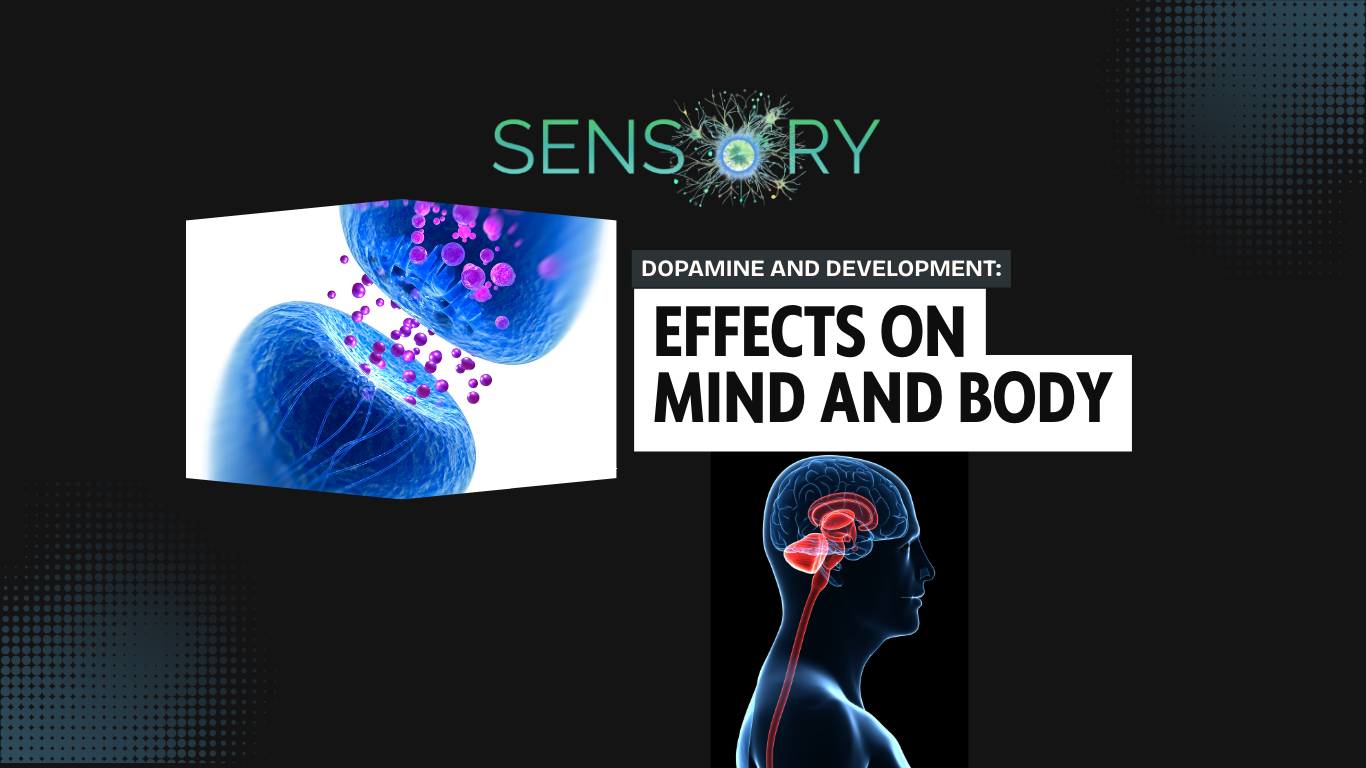Kinesthethic Learning & Neuroplasticity
By Earl Mamaril, MS, OTR/L • Sensory Therapy Place
Abstract
Children’s brains are designed to learn through movement, touch, and play. Research in neuroscience and pediatrics demonstrates that the somatosensory cortex and sensorimotor cortex devote a large proportion of brain “real estate” to the hands (Penfield & Rasmussen, 1950; Catani, 2017). Because of this, everyday activities like writing, tying shoes, or building with blocks are more than motor tasks—they are essential experiences that shape learning, self-regulation, and social skills. This article reviews current findings on brain-hand development, fine motor skill delays, and the growing tension between technology use and play-based learning in early childhood.
FIGURE.1 LibreTexts. (n.d.). Mapping the primary somatosensory area (sensory homunculus). In Anatomy & Physiology (Boundless). LibreTexts.
The Brain’s Body Map: Why Hands Matter
The “homunculus” is a map of the body in the brain. In both the sensory and motor cortex, the hands and fingertips are disproportionately large, reflecting their importance in perception and skill (Penfield & Rasmussen, 1950; Catani, 2017). Hands contain up to 100 times more tactile receptors per square centimeter than the back (Johansson & Flanagan, 2009), making them powerful tools for learning. Every time a child traces letters, ties laces, or stacks blocks, they send rich signals to the brain that strengthen connections for attention, coordination, and problem-solving (Makin & Bensmaia, 2017).
Fine Motor Delays: A Growing Concern
In the past decade, pediatric therapists and teachers have reported increasing fine motor delays in young children. One study found that over 70% of early educators noticed children struggling more with pencil grasp, cutting, or tying shoes compared to previous generations (Marr et al., 2024). Delays are seen both in typically developing children and in those with diagnoses such as developmental coordination disorder (DCD) or autism spectrum disorder (ASD) (Blank et al., 2019). These difficulties often correlate with limited exposure to hands-on play, decreased outdoor activity, and higher screen time (Suggate, 2012).
Movement Development: From Reflexes to Coordination
Motor development follows a predictable sequence:
- Flexion/Extension (homologous patterns) – infants begin with symmetrical movements (e.g., kicking both legs).
- Homolateral movements – one-sided patterns emerge (e.g., right arm and right leg moving together).
- Cross-lateral coordination – complex patterns like crawling, walking, and running require both brain hemispheres to communicate (Bobath & Bobath, 1975; Bartenieff, 1980).
Cross-lateral movement, especially crawling, is linked to corpus callosum development and later skills such as reading and writing (Hannaford, 2005). Skipping these foundational stages can contribute to poor bilateral coordination, clumsiness, or learning difficulties.
Technology and the Decline of Play
Recent studies highlight the risks of too much screen time and academic pressure in early years. Excessive technology use in toddlers has been linked to motor and language delays (Madigan et al., 2019). Meanwhile, U.S. kindergarten classrooms have shifted toward academic instruction, often at the expense of play and movement (Bassok et al., 2016). By contrast, countries such as Finland delay formal academics until age 7, emphasizing outdoor play and social development—and consistently outperform the U.S. in international education rankings (Sahlberg, 2015; OECD, 2023).
Clinical and Educational Implications
- For Parents: Encourage unstructured play, limit screen time, and provide daily opportunities for children to use their hands in tasks like cooking, buttoning, and drawing.
- For Educators: Integrate kinesthetic learning methods—tracing, building, movement breaks—to reinforce academic concepts through the body.
- For Therapists: Monitor for retained reflexes and fine motor delays; provide interventions that promote bilateral coordination and sensory integration.
Conclusion
The brain is wired for movement, touch, and play. Prioritizing early motor development not only supports school readiness but also fosters lifelong learning, emotional resilience, and adaptability. As occupational therapists, educators, and parents, our task is to restore balance: less rote, more play; less screen, more movement.
References
- Bartenieff, I. (1980). Body movement: Coping with the environment. Gordon and Breach.
- Bassok, D., Latham, S., & Rorem, A. (2016). Is kindergarten the new first grade? AERA Open, 2(1), 1-31.
- Blank, R., et al. (2019). International clinical practice recommendations on the definition, diagnosis, assessment, intervention, and psychosocial aspects of developmental coordination disorder. Developmental Medicine & Child Neurology, 61(3), 242–285.
- Bobath, B., & Bobath, K. (1975). Motor development in the different types of cerebral palsy. Heinemann.
- Catani, M. (2017). A little man of some importance. Brain, 140(11), 3055–3061.
- Hannaford, C. (2005). Smart moves: Why learning is not all in your head. Great Ocean Publishers.
- Johansson, R. S., & Flanagan, J. R. (2009). Coding and use of tactile signals from the fingertips in object manipulation. Nature Reviews Neuroscience, 10(5), 345–359.
- Madigan, S., et al. (2019). Association between screen time and children’s performance on a developmental screening test. JAMA Pediatrics, 173(3), 244–250.
- Marr, D., et al. (2024). Teacher perspectives on fine motor skill development in early childhood. Early Child Development and Care. Advance online publication.
- Makin, T. R., & Bensmaia, S. J. (2017). Stability of sensory topographies in human cortex. Trends in Cognitive Sciences, 21(7), 573–584.
- OECD. (2023). Education at a Glance 2023: OECD Indicators. OECD Publishing.
- Penfield, W., & Rasmussen, T. (1950). The cerebral cortex of man. Macmillan.
- Sahlberg, P. (2015). Finnish lessons 2.0: What can the world learn from educational change in Finland? Teachers College Press.
- Suggate, S. P. (2012). Early reading instruction: Does it really improve reading in the long term? Learning and Instruction, 22(5), 315–324.

Neurodevelopment Guide
Dopamine, Development, and Modern Life
Are you aware of quick dopamine bursts?That can shape attention, mood, play, and relationships, especially in kids and teens. This guide walks parents through how dopamine works and what modern life might mean for growing brains.
Caption
Row
Pair text with an image to focus on your chosen product, collection, or blog post. Add details on availability, style, or even provide a review.
Caption
Row
Pair text with an image to focus on your chosen product, collection, or blog post. Add details on availability, style, or even provide a review.
No reviews available.

